Industrial Shellfish Production, Past and Present
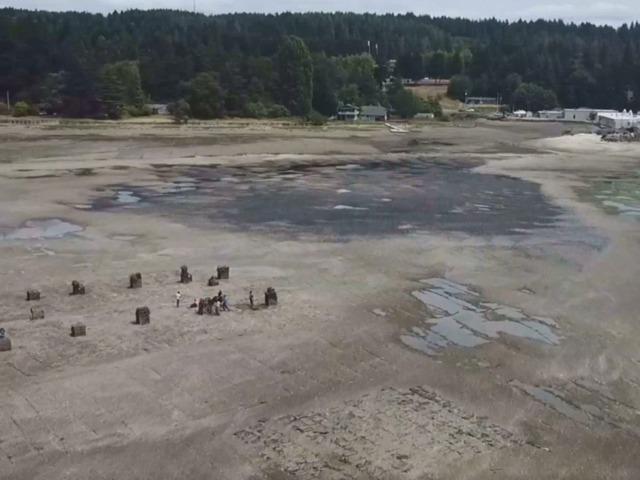
Aquaculture at the Burley Lagoon
Disrupted sand dollar bed, Burley Lagoon
Burley Lagoon, shellfish operation
In 2012, a large shellfish corporation signed a 20 year lease to manage all shellfish operations in Burley Lagoon. Residents became concerned about some of the company’s methods and practices and the long term consequences those might have on the estuary’s environment and quality of life around the lagoon. As an estuary, the lagoon has a vital role in the survival of diverse marine life communities calling Puget Sound home.
Then, in 2014, that shellfish company applied to Pierce County and the Washington Department of Fish and Wildlife for a permit to convert 25 acres of Burley Lagoon into a high density, industrial geoduck site. On the Asian market, geoducks have sold for as high as $125 per pound, and most of the U.S. commercial geoduck harvest is exported.(1)
Citizens were alarmed. If approved, the project could substantially alter the ecological function of the estuary. The cumulative effects of the gear, methods, and practices used in industrialized geoduck production remain under-studied and inconclusive.(2)
Since shellfish aquaculture permits are approved county by county without coordination among them, citizens worry industrialized geoduck sites could spread like a patchwork across Puget Sound tidelands without being adequately regulated and researched for their cumulative, ecological impacts.(3) How much more Puget Sound marine land claimed suitable for aquaculture should be permitted to the industry?
History of Aquaculture in Burley Lagoon
Natural tide pools, Burley Lagoon, 2014
Plastic predator exclusion nets, Burley Lagoon, 2016
Burley Lagoon has been a home for oyster farming since the early 1900s. Later, clams were also cultivated. Until 2012, the practices used to grow and harvest in the estuary seemed low-key and were considered benign by area residents. Biodiversity in the lagoon was obvious given the rich variety of marine life on the beach, and there was little noise and disruption to the community from the operation. Commercial aquaculture in the lagoon has long provided the public with a valuable source of food many enjoy, but the industry should function within a structure of protections for the estuary’s ecosystem and overall quality of life for the surrounding neighborhood.
After the change in aquaculture management in 2012, it appeared to residents that native marine life were declining on the beach. Citizens learned many lagoon species are considered pests and predators by the industry and can be removed from their environment to protect the industry’s products. Based on their observations, residents believe they have seen the consequences of this practice, called “pest management” or “predator control” by the industry, through a severe reduction in the number and variety of creatures along the shoreline and in the nearshore.(4,5)
Biodiversity & Shellfish Industry Impacts
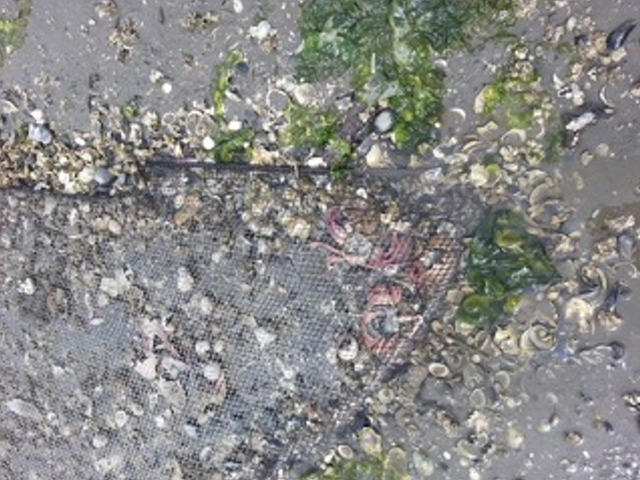
Crabs trapped under plastic predator exclusion nets, Burley Lagoon
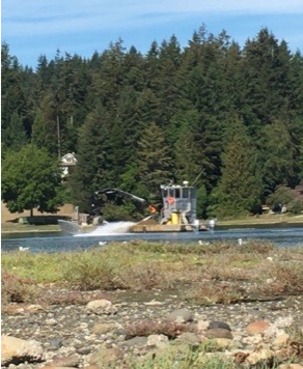
Shellfish barge modifying Burley Lagoon tidelands
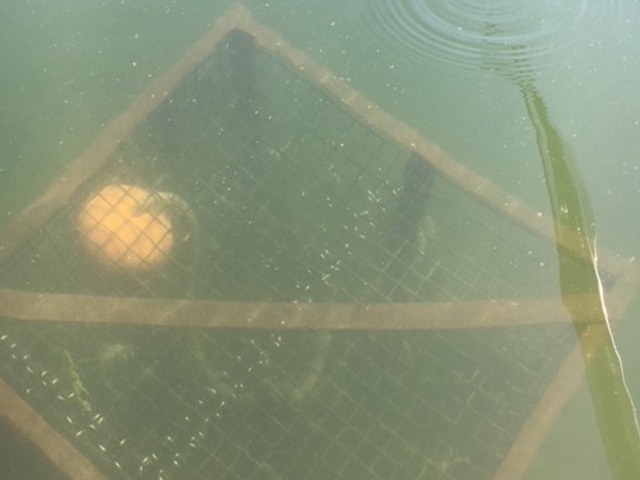
Non-deployed buoy = Unmarked crate
Biodiversity is critical to a healthy marine ecosystem, and the loss of species variety in the lagoon for the sake of product yield concerns those familiar with the beach. Studies have shown significant consequences can occur when the food web is altered and can result in substantial effects on an ecosystem.(6,7) The Burley estuary is home to varieties of forage fish that feed the salmon runs from Burley and Purdy creeks. Eventually, these fish nourish other Puget Sound fauna, including Southern Resident orcas. Interference with the interconnectedness and interdependence among the lagoon’s species can have effects beyond the estuary itself.(7)
The industry is allowed to modify the lagoon’s bed to an extent by adding gravel and/or ground oyster shell to the natural tidelands to assist shellfish production. Burley Lagoon has some sections that are coated with these materials. This substrate modification practice alters an area and can affect animals, plants, and habitats within the ecosystem. Residents are concerned about the effects of layering these materials on the lagoon bed over time.
Large sections of plastic netting now stretch over the Burley Lagoon bed to protect the industry’s products. They can impact marine plants or exclude remaining marine animals from their natural habitat and feeding grounds. Flora and fauna can become trapped under the nets. Residents also witness the arrangement of oyster bags and metal crates on the lagoon bed. When covered by the incoming tide, some of the crates’ buoys may not consistently deploy and recreationists cannot be sure where the crates sit below the water. Long poles protrude above the water in places around the lagoon and may fall at angles or float on the lagoon surface while remaining connected beneath the water. These can be difficult for boaters and skiers to see, especially with the glare of sun on water, and may be considered navigation and recreation hazards.
Impacts to the Community
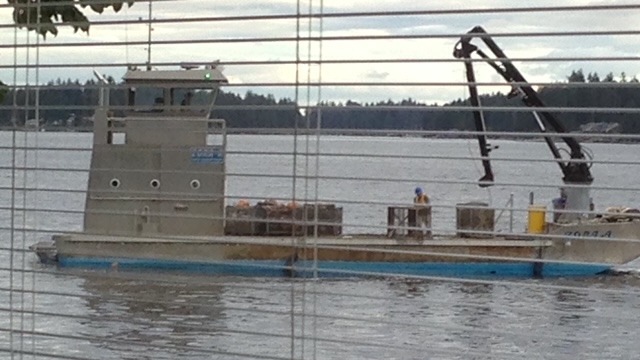
Noise and glare from a shellfish industry power barge
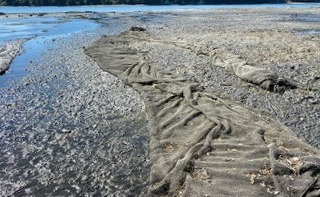
Burley Lagoon, clam die off and stench, 2019
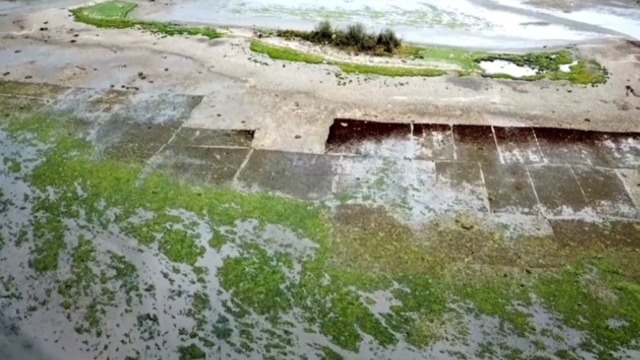
A portion of the netted beaches in Burley Lagoon
Residents around the lagoon experience disruptive nighttime noise and light from the shellfish industry activities. Metal crates are loaded and unloaded using a power barge. The barge’s motor, vessel davit crane, crate landings, and workers, who may call out to one another, cause racket that easily travels across the water. Lights may also shine into homes at night, suddenly illuminating darkened rooms and startling or awakening shoreline residents.
During the summers of 2019 and 2020, many weeks of stench from the lagoon had citizens wondering if the existing shellfish operation was straining the capacity of the fragile estuary. They questioned whether extensive netting was involved since “Biological fouling of netting may cause problems on some beaches, especially during spring and early summer months. Algae can also grow on or under the netting and form thick mats at low tide. Extremely thick mats of algae can create anoxic conditions in the sediments beneath them … .”(8) Converting 25 acres of Burley Lagoon tidelands to high density, industrial geoduck production, with its particular gear and planting practices, may support “fouling” in the Burley estuary.
Plastic Pollution and Aquaculture Gear
Plastic geoduck tubes covered with plastic predator exclusion nets
Coming to Burley Lagoon?
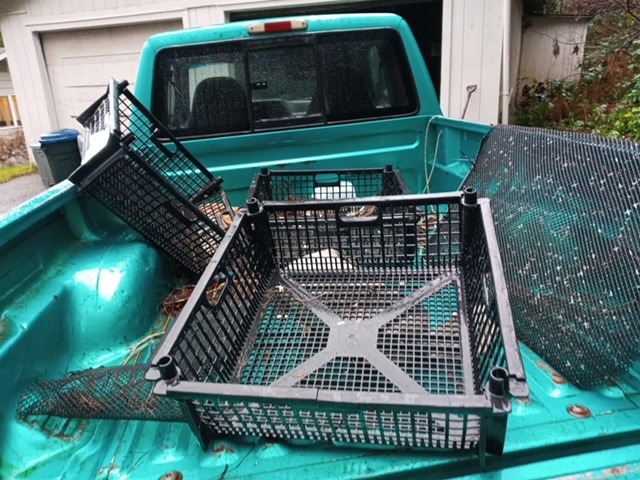
Lagoon residents clean up plastic industrial gear littering Burley Lagoon beaches.
The conversion of the current shellfish beds to an industrial geoduck site would mean changes in growing methods and gear used in the lagoon. Approximately 40,000 PVC tubes per acre could be pounded into the Burley estuary’s substrate to house and protect the juveniles or seed. Topped by forty thousand plastic net caps and bands and covered with large plastic netting stretched over the tidelands, the site could contain about 8 miles of plastic per acre. The site would be visible at low tide, offering a view of industrialized tidelands and marring the aesthetics of the area. While the tubes are removed one to two years after planting, if seeding is rotated at the site, the tubes and netting would be ongoing in the tideland.
Science has shown plastic and plastic microparticles may damage the marine environment which could put Puget Sound, the Burley estuary, its ecosystem, and our food web at risk.(9) Harvesting is completed using pressure hoses in the substrate, liquifying and disrupting the sediment, further displacing benthos, marine organisms living on or in the sediment. There is also evidence that disturbing sediment can release carbon from the seabed which can lead to increased acidification of the water.(10) Equipment debris from current clam and oyster production washes up on the beach. If the permit to convert to geoduck production is approved, residents anticipate finding additional industrial gear littering the shoreline.(11)
Environmental Impact Statement
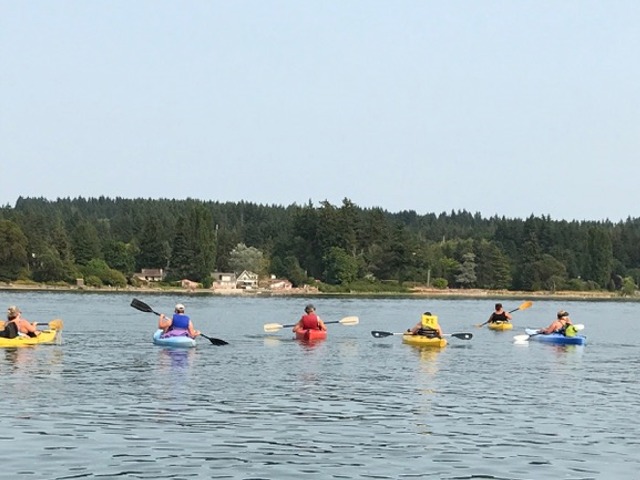
We believe in the public trust doctrine.
Burley Lagoon Tidelands are not just for commercial aquaculture.
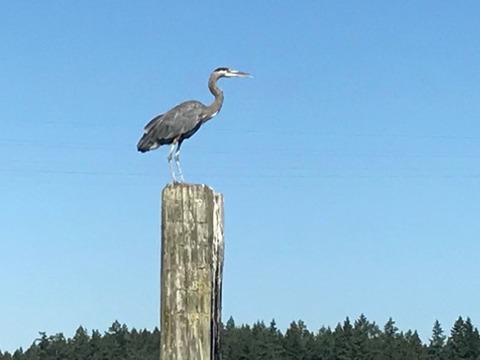
Help me protect my feeding grounds.
In 2016, Pierce County issued a Determination of Significance and required an Environmental Impact Statement (EIS) for the proposal. Time extensions were later granted to the company and the EIS is now expected for public consideration and comment in June of 2021. At the EIS release, the public will have limited time for review and action. Experts will be needed to adequately respond to the EIS, submit evidence, and give testimony during any following hearings. Friends of Burley Lagoon is committed to protecting the estuary from negative impacts of the proposed conversion to industrialized geoduck production and to ensuring Puget Sound tidelands are not presumed to primarily be industrial property for commercial aquaculture.
What You Can Do
We hope to call on you when voices are needed to speak up for Puget Sound and Burley Lagoon. Please sign up for our call-to-action email list or Contact Us for more information.
If you would like to participate in preserving and protecting one of Puget Sound’s treasured lagoons, the Burley estuary, please consider donating to the effort. We welcome and thank you for your interest.
Footnotes
(1) Dunne, N. (2017, August 1). Washington Sea Grant researchers seek paths forward in local conflicts over geoduck farming. NOAA, Sea Grant. The Farming Process, para. 2.
(2) Ma, M. (2015, October). Aquaculture gear, not geoducks, impacts ecosystem if farming increases. UW News, para.15.
(3) Bergstein, A. (2018, May 13). Damning emails surface showing state concerns over aquaculture methods, Olympic Peninsula Environmental News, para 2.
(4) DeFracisco J, Murray, K. (2010,March 11). Pest Management Strategic Plan for Bivalves in Oregon and Washington, p. 27-68.
(5) Booth, S.R., (2014, January). Dichotomous key and illustrated guide to the pests of bivalve aquaculture in Washington and Oregon. Pacific Shellfish Institute.
(6) Ferriss B,E., Reum J.C.P., McDonald P.S., Farrell D.M., & Harvey C. J. (2016, January, February). Evaluating trophic and non-trophic effects of shellfish aquaculture in a coastal estuarine food web. ICES Journal of Marine Science, Vol.73, Issue 2, Sec: Discussion.
(7) VanBlaricom, G, Harvey, C, MacDonald P. (February 2014-August 2019). Puget Sound Ecosystem Model for Geoduck, An Ecosystem Approach to Investigate Direct and Indirect Effects of Geoduck Aquaculture Expansion in Washington State. Sea grant, Washington. University off Washington School of Aquatic and Fishery Sciences. Project # R/SFA-5. Research Update..
(8) Toba, D. (2005, September). Small-Scale Shellfish Farming for Pleasure and Profit in Washington. Washington Sea Grant Program Publications, p. 11.
(9) Galloway, T. and Lewis, C. (2016, March 1). Marine Microplastics Spell Big Problems For Future Generations. PNAS. Vol. 113, No. 9, 2331-2333.
(10) Einhorn, C. (2021, March 17). Trawling for fish may unleash as much carbon as air travel, study says. The New York Times, https://www.nytimes.com/climate-change-oceans
(11) Dunne, N. (2017, August 1). Washington Sea Grant researchers seek
paths forward in local conflicts over geoduck farming. NOAA, Sea
Grant. Interview Concerns, para 2.
